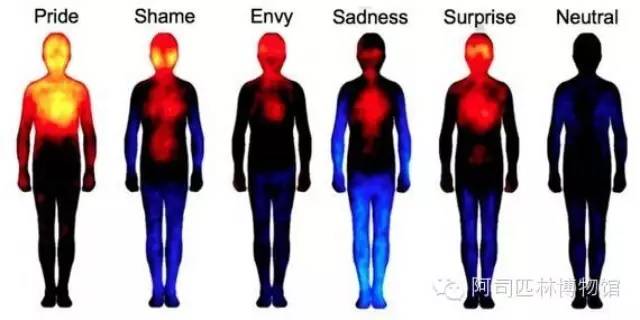
The apparent reaction of emotion in different parts of the body
So we choose to love or be loved.
In
cross-cultural communication
As a piece to bring our elegance and romance to you, prom dresses fonthill road finsbury park is almost a basic need for any lady. Options in varieties of styles and silhouette are available now!
people feel the change of mental state
causes more and more changes in different parts of the body
when we feel love and happiness
our whole body is cooperating with this joy
so we love or be loved
even if we are alone
there are obvious responses to happiness that can be replenished.
: OLGA KHAZAN
in cross-cultural communication, People feel that changes in the mental state more and more cause obvious reactions of different emotions of the body in different parts of the body
people involved in activities report: a certain emotion causes the sensation of a certain part of the body to increase (warm color) or decrease (cool color)-Proceedings of the National Academy of Sciences
many years ago, I spent a whole day in Brussels, Belgium to interview. I recited the main points in my resume again and again in English and French, trying to choose a suitable position from four different positions in this strange city. When I repeated the "social science" to myself hundreds of times in this big city, I felt my hands and feet sweating involuntarily. Soon, wearing "sensible" black "adult" shoes, I roamed the cobbled streets. Every time I meet a new boss in an interview, I shake hands and say "good morning", and I feel like a cold sponge.
I don't have the rare adenosis caused by waffles. Emotions (anxiety in my case) activate the nervous system, promote the endocrine, cause musculoskeletal responses, and cause tingling along the spine, causing flushing and other clinical manifestations. The question is, do all our emotions trigger the same reaction? Is it true that when our feelings make us feel hot, or when we are nervous, we all look confused?
Finnish researchers, published today in the Proceedings of the National Academy of Sciences, say that emotions do affect our bodies consistently.
in five experiments, 701 participants "showed two tendencies to respond to hearing and seeing exciting words, stories, movies, or certain facial expressions. When they are required to receive certain stimuli, they color the corresponding parts of the body in the picture of the body with the increase or decrease of the body's response. " The change in their mood is caused by listening to stories or watching movies. On the blank chart made by the computer, color is painted according to the feeling of the body, the parts with strong reaction are painted red or yellow, and the parts with lighter reaction are painted blue or black.
now let's take a look at the physical reaction of the participants:
quoted in the Proceedings of the National Academy of Sciences
this picture shows the desired effect: the head is hot when angry; happy people have fever from the head, hands to feet; people who feel depressed are painted blue (that is, they all feel the sensation of their limbs). Almost all emotions cause changes in the head, such as smiles, frowns, skin temperature, and other body changes, perhaps because you are preparing and talking to a hug, or trying to put out your fist to knock out the other person. At the same time, "the reaction also occurs around the digestive system and throat, but mainly in the stomach," the authors write. " It is worth noting that the response of the limb is not like blood flow, body temperature, or other objective measurements. According to their own experience, they say that the main manifestation is the tingling sensation of the body.
in the picture above, there is a close relationship between the color of different body parts and the 71 stimuli (words, stories, movies, etc.) that each person receives. People who speak Taiwanese, Finnish, and Swedish paint similar maps of human response areas, indicating that the response of the human body is not limited to one language.
so what do we see in the diagram? The authors point out that from a physiological point of view, most emotions can only cause small fluctuations in heart rhythm or changes in body surface temperature, and our bodies do not heat up with surprise.
however, the results seem to reveal the body's subjective feelings about the state of mind, the effects of muscles and internal organs, and indistinguishable nervous responses, such as feelings of jealousy that do not make our faces turn red, but we feel our faces turn red.